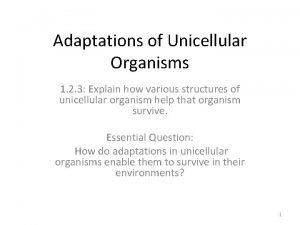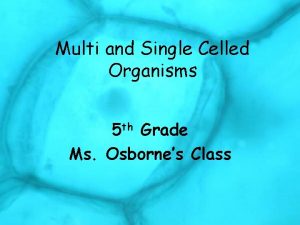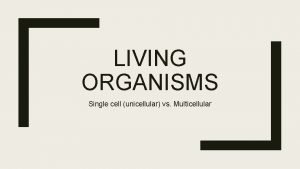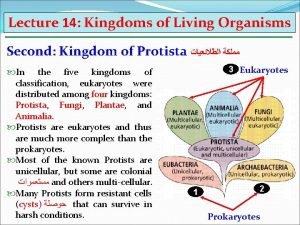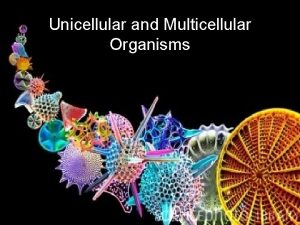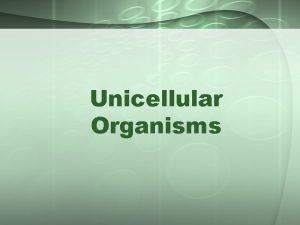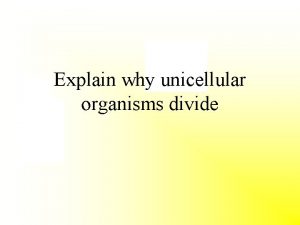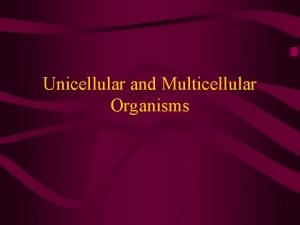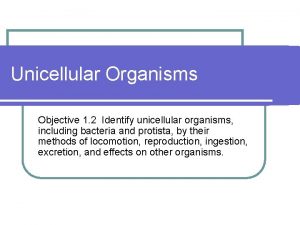Adaptations of Unicellular Organisms 1 2 3 Explain







- Slides: 7

Adaptations of Unicellular Organisms 1. 2. 3: Explain how various structures of unicellular organism help that organism survive. Essential Question: How do adaptations in unicellular organisms enable them to survive in their environments? 1

Contractile Vacuole • Vacuoles store materials such as water, salts, proteins, and carbohydrates. • In unicellular organisms like paramecium, they contain a vacuole called a contractile vacuole. – By contracting rhythmically, this specialized vacuole pumps excess water out of the cell. – This allows the cell to maintain homeostasis or balance. 2

Cilia • Ciliates, like the paramecium, use hairlike projections called cilia for feeding and movement. • Cilia propel them through the water. • They also line the organism’s gullet and move its food to the organisms interior. 3

Flagella • Some prokaryotic cells use flagella to propel themselves. • Flagella are whiplike structures that are used for movement. • Some eukaryotic cells have flagella as well. – Sponges carry out basic functions, such as feeding and circulation, by moving water through their bodies. 4

Pseudopods • Some eukaryotic organisms move by temporary cytoplasmic projections called pseudopods. • Pseudopods are used for feeding and movement. • An ameoba is a type of organism that uses pseudopods. • These can also be called “false feet. ” – The amoeba moves by first extending a pseudopod away from its body. – The cytoplasm then streams into the pseudopod. – This is a slow but effective way to move from place to place. 5

Eyespots • Plantlike protists, like algae, possess a structure called an eyespot. • This is used to help the algae find sunlight to power the process of photosynthesis. • Flatworms have an eyespot that can detect changes in the amount of light in their environment. 6

Taxis • Taxis – movement of an organism in response to a stimulus – Phototaxis: movement in response to light • Done by Euglena who have eyespots – Chemotaxis: movement in response to an increasing concentration of a chemical 7

